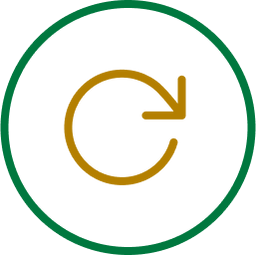CBD is everywhere. It’s been popularized by a multitude of communities centered around health and wellness. Athletes are partially responsible for advancing the popularity of CBD and frequently discussing their CBD use, claiming that it’s the key to perfect post-workout recovery.
CBD has the potential to be an immensely valuable part of promoting workout recovery, but it’s far from the only part of the process.
If you’re interested in using CBD for muscle recovery, here’s what you need to know about the way CBD works and the results it’s capable of producing.
What Happens to Your Body When You Work Out?
When you work out, microscopic tears develop all over your muscles and muscle fibers. This leads to soreness, stiffness, muscle tension, or sometimes swelling the morning after a workout, known as delayed onset muscle soreness.
The majority of the time, this discomfort in your muscle tissue is temporary and normal.
Your body uses protein, electrolytes, water, and several key nutrients to repair the muscle. These repaired microscopic tears will, over time, make a muscle larger and stronger. It’s the only way to see and experience noticeable gains in strength and athletic ability.
While using proper form and taking a slow, steady approach to increasing the intensity or duration of a workout routine is optimal for success, slight soreness from time to time is unavoidable. It’s a natural part of seeing your hard work pay off.
This soreness is different from workout-related muscle spasms, which warrant greater attention.
What is CBD?
CBD, or cannabidiol, is a non-psychoactive cannabinoid that occurs naturally in the cannabis plant. Most CBD is derived from hemp plants, which contain minimal THC. The limit for THC in hemp is 0.3% by dry weight, and it isn’t enough THC to produce psychoactive effects.
CBD is very similar to substances produced in the human body called endocannabinoids. The body manufactures endocannabinoids on demand, feeding them into the body’s endocannabinoid system.
The endocannabinoid system is a series of cb1 and cb2 receptors that exist within almost every important system of the body.
What Can CBD Do For Your Body?
When you use CBD products, the CBD stimulates the endocannabinoid system and provokes a response from the body. The idea behind CBD is that it encourages and supports the body in its natural functions, even helping to calm anxiety and regulate cortisol levels.
Your body wants to perform well, and it’s constantly working to maintain itself. CBD provides the endocannabinoid system with a little bit of additional fuel.
CBD has been studied to improve mobility and reduce swelling in patients living with multiple sclerosis. While that doesn’t translate directly to athletics, it does serve as proof of concept for CBD’s use in boosting mobility and lowering inflammation for other people.
CBD has no addictive potential and no psychoactive effects. It’s safe to use and generally well tolerated. Side effects are mild and usually related to the consumption of the carrier oil rather than the CBD itself.
You should still ask your doctor before you begin using CBD, as it can sometimes interrupt the absorption of certain medications. Get the green light before you proceed.
How to Use CBD for Workout Recovery
If you plan to use CBD as a part of your workout recovery routine because of its anti-inflammatory compounds, you have some decisions to make. It isn’t as simple as finding a one size fits all solution. All CBD is created differently, and it may work differently with your body depending on your sensitivity.
Choosing a Form of CBD
CBD oil is the most popular form of CBD for workout recovery. CBD oil comes in a glass bottle with a dropper dispenser. The drops are placed under the tongue and absorb through the soft tissue there, quickly entering the bloodstream.
CBD also comes in a soft gel form, but soft gels are less effective. Anything you take by mouth has to pass through your digestive system and be metabolized by your liver before your body can use it.
This reduces the potency of the CBD within the soft gel while delaying its effects. There are also CBD creams, gummies, and capsules.
How Much CBD to Use
It’s difficult to determine the proper milligrams of CBD to take, mainly because the upper limit is so high. CBD has been determined safe at dosages as high as 1,500 mg daily, and most people would never use that much.
You’ll get many conflicting answers about how much CBD you should be using daily, with every CBD company referring to its own science for calculating perfect numbers. Start by taking 50 mg a day once a day. If you’re not noticing a difference in how you feel after two weeks of consistent use, go to up to 100 mg a day.
Repeat the process, increasing by increments of 25 mg daily every two weeks until you find the perfect amount allowing you to experience the anti-inflammatory properties of CBD.
Using CBD at the Right Time
It doesn’t necessarily matter when you use CBD, just so long as you’re using it. Many people prefer to use their CBD an hour before a workout or immediately after a workout. You’ll know which method will work best for you after you experiment.
It doesn’t hurt to take CBD both before and after your workout, just as long as you’re slipping a daily dose into two parts to prevent unwanted side effects like dizziness, confusion, diarrhea, or sedation.
When Does CBD Kick In?
Although sublingual CBD tinctures will get to work in less than an hour, it can take up to a month of daily use to experience consistent effects. Although CBD is helpful for workout recovery, it doesn’t do much to alleviate aches as they occur.
CBD won’t tend to regular aches and discomforts of workouts. It doesn’t act as a reliever, and its effects are much slower to set in. It will simply support your body while you’re naturally recovering from them. It doesn’t do anything to address the immediacy of a sore muscle or a stiff joint.
What About Joint Aches Following a Workout?
CBD won’t work to resolve joint aches and discomforts following a workout. You can use CBD daily if you live an athletic lifestyle, but it won’t relieve extreme discomfort.
Hempvana Arthritis Pain Relief Gel is designed specifically to ease the discomfort of achy joints. It’s formulated with cooling menthol to help soothe achy joints within a matter of minutes. It also incorporates the moisturizing powers of hemp seed oil with the combined strengths of glucosamine and chondroitin, two popular chemical compounds clinically proven to be beneficial for joint health.
You’ll get nearly immediate relief, especially if you take the time to massage it into the joint. Massage improves circulation and helps work topical products into the skin, simultaneously providing two types of relief.
CBD supplements will support your body while your muscles recover.
Sources:
How Do Muscles Grow? | University of New Mexico
FDA Regulation of Cannabis and Cannabis-Derived Products, Including Cannabidiol (CBD) | FDA
Cannabidiol to Improve Mobility in People with Multiple Sclerosis | Frontiers in Neurology










